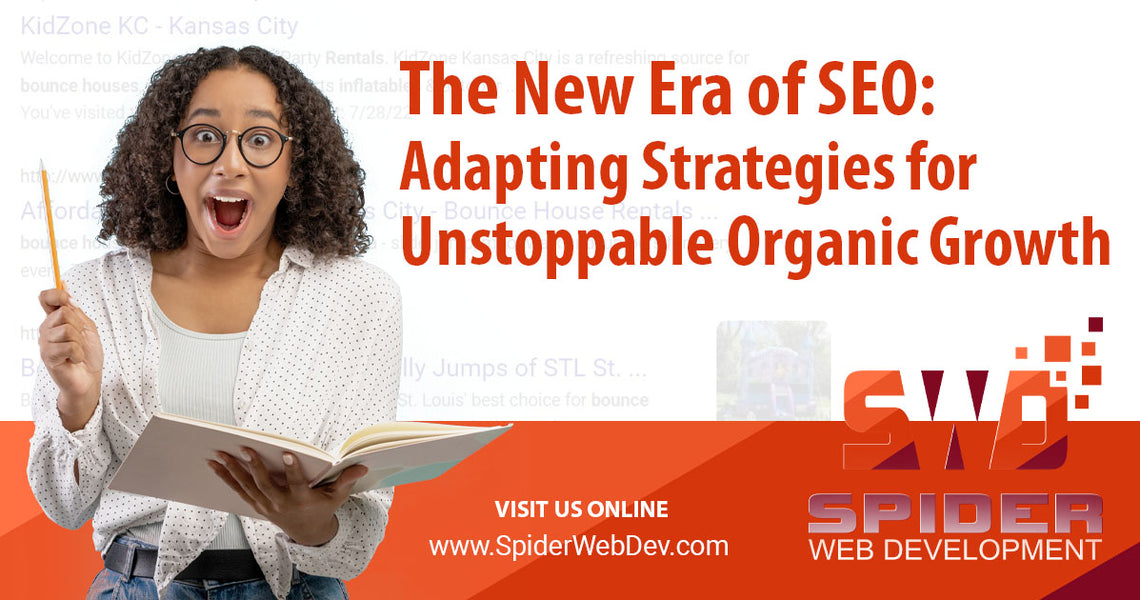The world of SEO is constantly evolving, and it's time to rethink our strategies to keep up with the ever-changing landscape. In this post, we'll explore how industries like e-commerce and B2B SaaS can adapt their SEO approach to create demand and build authority, ultimately leading to unstoppable organic growth. We'll also discuss the importance of leveraging platforms like TikTok, facebook and Pinterest for top-funnel discovery and brand awareness. Let's dive in!
New studies have shown that over 60% of Google search users make their first click decision within 7 seconds, and 64% never go past the Google Ads, and local map results. This would indicate that having a robust ads campaign, developing habits of using Google Business Profile as your primary social platform is key to the modern SEO strategy. GMB has a complete toolbox of features that will allow you to maximize your placement in the map results. Post just like you would on any other social platform, announce specials and offers, and create your categories and product listings so customers can order right from your GMB listing.
Section 1: Rethinking E-commerce SEO Strategies
1.1 The role of TikTok, Facebook, Instagram and Pinterest in top-funnel discovery:
Traditional SEO focuses on Google, but social media platforms are offering new opportunities for product discovery. These platforms showcase curated content and influencer-driven trends, providing a more authentic and engaging user experience. New studies are showing that more and more users are taking their cues from social media influencers, and then going to Google to search for the company name rather than an initial keyword search. The social media post had already satisfied them with what they were looking for, so the search was just to find the actual company mentioned. Links for the social media post is one thing, and those traffic results will show in your analytics referrals reports. However, the idea for your website link always being present in someone's post cannot be counted on, so cultivation of your "Influencers" will be key.
These social media influencers can introduce users to new brands and products, creating a demand that leads to Google searches and eventual purchases. So start cultivating your social media influencers to them driving traffic to your site.
1.2 Analyzing branded organic traffic versus discovery traffic:
Branded organic traffic consists of users searching for specific brand names, while discovery traffic represents users exploring new products and brands. Monitoring the ratio of branded to discovery traffic can help identify gaps in your SEO strategy and optimize your content accordingly. Focusing on creating demand with discovery traffic can lead to long-term growth by expanding your customer base.
1.3 Creating demand through content and social media platforms:
1.4 Reevaluating data and strategy for a more effective approach:
Section 2: B2B SaaS and the Shift in Content Creation (B2B SaaS stands for business-to-business Software-as-a-Service.)
2.1 The decline of traditional content creation in B2B SaaS:
2.2 The rise of video content for customer acquisition and demand creation:
2.3 Understanding your position and authority in the market:
2.4 Building authority through expertise and industry leadership:
Section 3: Adapting SEO Strategies for Long-Term Organic Growth
3.1 Embracing user intent and focusing on the user journey:
3.2 Diversifying your content strategy:
3.3 Building a strong backlink profile (Not Link Farms or Circles):
3.4 Staying up-to-date with SEO best practices and algorithm updates:
The world of SEO is constantly changing, and businesses must adapt their strategies to stay ahead of the curve. By rethinking traditional approaches to SEO, leveraging social media, and focusing on user intent and the buyer's journey, you can create a demand that leads to long-term organic growth. Embrace these new strategies and stay agile in your approach to SEO to ensure your brand remains competitive in today's ever-evolving digital landscape.






